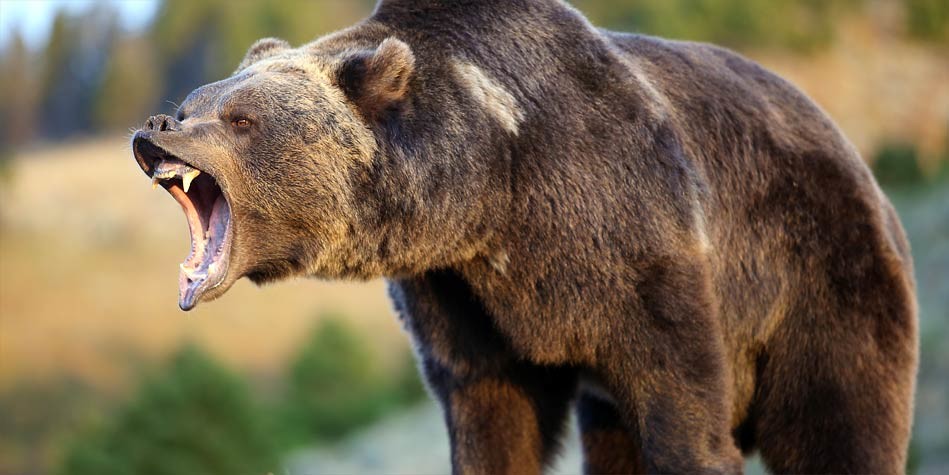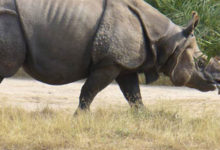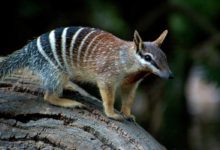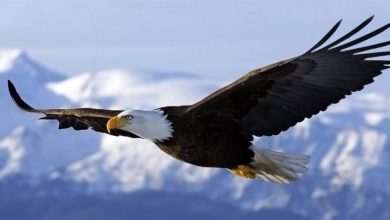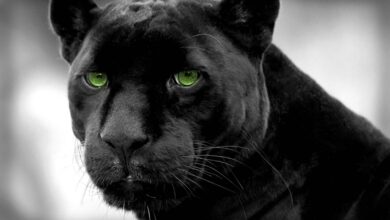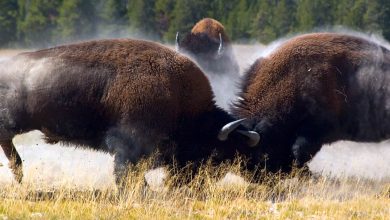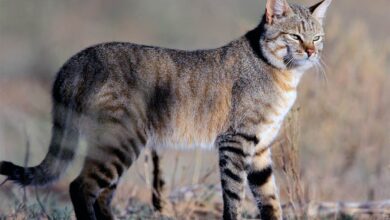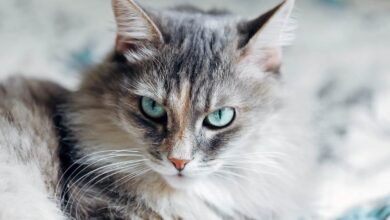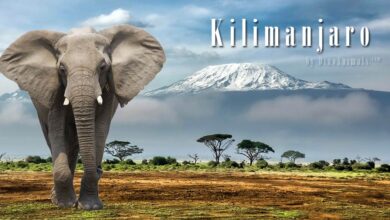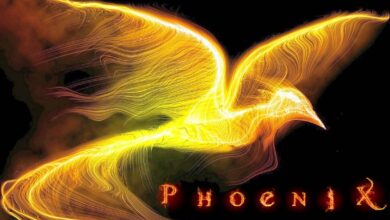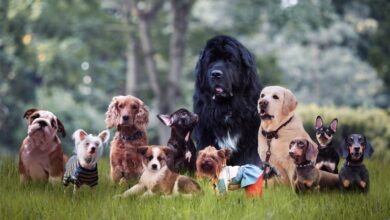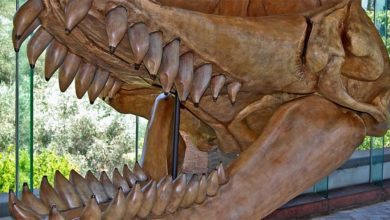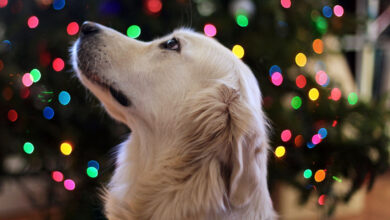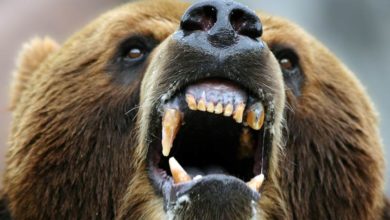Grizzly (Ursus arctos horribilis)
Winnie the Pooh was an adorable, yet not very smart bear, while Floppy Bear always lent friends a helping hand. Although both of them were teddies, the foundation of their creation was a bear. The lovely ‘teddies’ are not so lovely in the real world, nevertheless they are equally interesting and far more beautiful than their animated companions.
Classification
- Family: Ursidae
- Genus: Ursus
- Species: Ursus arctos ssp.
- Subspecies: Grizzly (Ursus arctos horribilis)
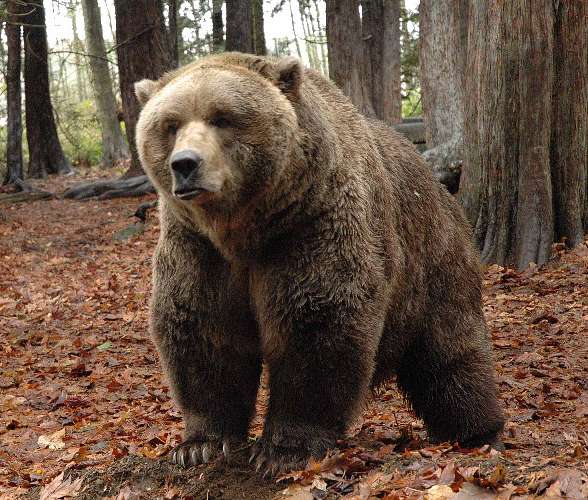
Areas of occurrence
This rare subspecies of a brown bear has its natural habitat only in North America: Canada, Alaska plus natural reserves in the following states:
- Montana
- Idaho
- Wyoming
- Washington
Alaska has the largest grizzly population (ca. 30 thousand). Nearly 1500 live in other states of the USA, with Montana in the lead with 800 bears and Yellowstone National Park with 600. At present, 25 thousand grizzlies live in Canada. They are most common on areas abundant with water reservoirs, natural streams and rivers plus in the seaside and by ponds in the salmon`s spawning season.
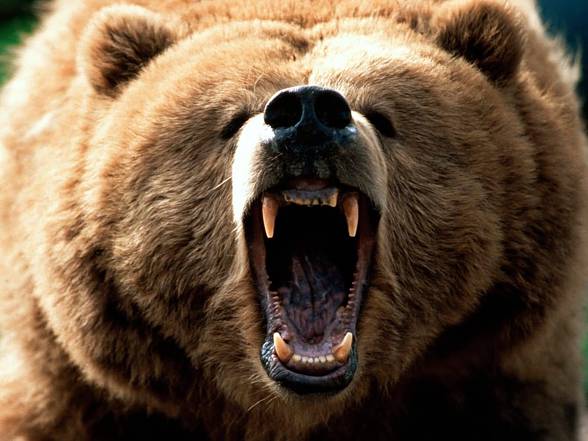
Appearances, food and hunting style
Grizzly earned its name thanks to its hair color – ‘grizzle’ means simply ‘grey’. Grizzly`s hair may vary from fair to almost completely black, though its fur is usually brown with greyish tips. Grizzly bears have a distinctive “hump” on their back, thanks to which they are easily distinguished from the American black bear species (Ursus americanus), lacking this feature.
Wide, massive paws topped off with enormous claws, used for fish hunting and self-defense. One hit is all it takes to kill a similar sized animal.
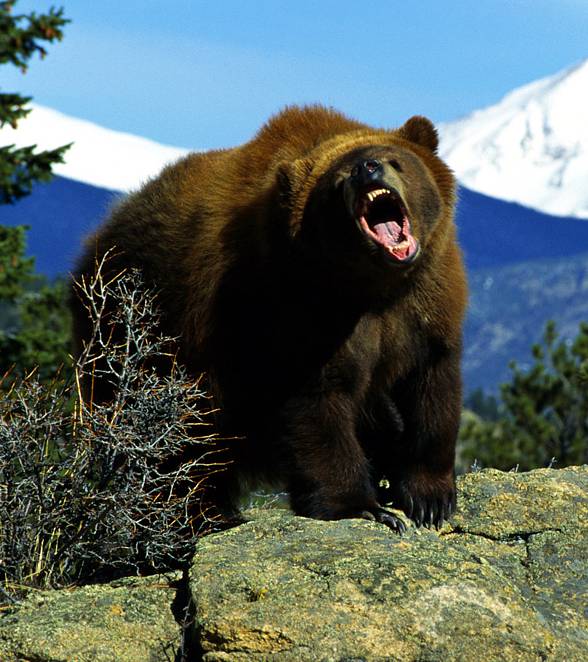
Although it is widely considered a beast, grizzly often eats fruit and vegetables. It is a carnivore in principle, yet becomes an omnivore when in need. A specific jaw structure allows it to do so. It eats nuts, roots, algae, carrion, rodents and fish. It has an outstanding olfactory system- it can sense carrion from a distance of 28 km (17 mile). It has the ability to hunt down a bigger prey e.g. a reindeer (Rangifer tarandus), but it only makes such decision facing a feeble, young or a wounded animal. One reindeer suffices for a female with baby bears for 4-5 days. To keep the food from being stolen, mothers hide the carrion. It also hunts for e.g. young moose.
Kodiak bears (Ursus arctos middendorffi) are bigger than grizzly and additionally far more dexterous in water.
Grizzlies best period of the year is the salmon`s spawning season, when fish swim upstream the rivers to their spawning grounds. Every bear has its own hunting style. Usually it sits in the water near the riverbank and repeatedly throw a fish ashore. It can also sit on a rock in the middle of the river stream and wait for a passer-by. Encountering several bears in one hunting area is not uncommon.
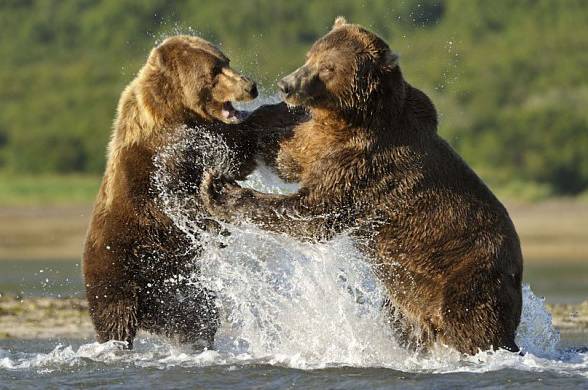
Lifestyle and character
Undoubtedly grizzly is dominant in its habitat, mostly because it has no natural enemies. It does not have a strict fixed territory, rarely crosses ones of its kind and also barely conflicts with other animals. It fights mostly during mating season, protecting its babies or food from wolves – and there is only one winner…
One must bear in mind (pun intended) that despite its considerable size it is still a surprisingly fast predator. Few can outrun it as grizzly reaches the speed of 50 km per hour. Even Usain Bolt is helpless…
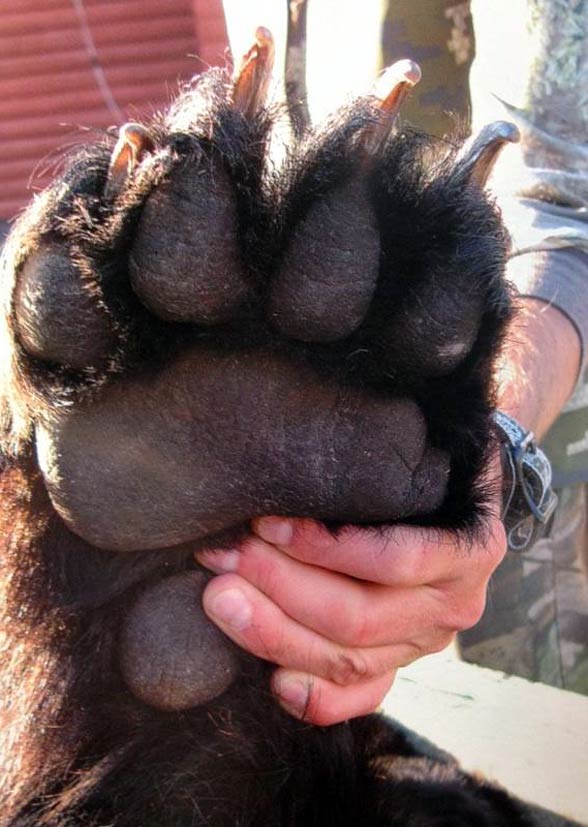
Seasons of the year and appetite
During spring and summer grizzly seeks food and sleep. When the leaves come falling down its appetite is automatically augmented to store a sufficient amount of fat to endure winter hibernation. However grizzly does not sleep over entire winter, as it only drowses – only slightly dropping down its body temperature. Throughout sunny days it wakes up to seek more nourishment. Some prefer to crawl into natural hideouts (caves, rock clefts) while more creative ones dig their own shelters underground.
The first to wake up from winter sleep are childless females and males. After winter sleep everything revolves around food all over again.
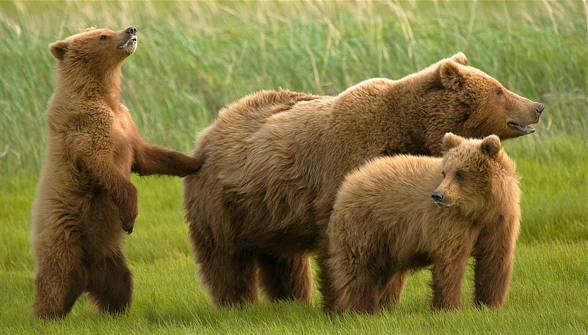
Breeding
Grizzly bears have one of the lowest procreation ratios among all continental mammals of North America. One of the most critical factors for such state of affairs is late sexual maturation (ca. 5 years of age). Another reason could be the fact that after insemination taking place in summer, the female`s organism delays implanting the embryo in the womb until winter hibernation, risking miscarriage whenever it does not succeed to store enough nutrition.
Females usually give birth to 2 baby bears in one litter, providing care during first 2 years of their life. Throughout these years it would not copulate with males. After reaching maturity, babies leave their mothers` patronage, but before they become truly independent they may be killed by a solitary adult male grizzly. Such an occurrence causes the mother to withhold breeding for next 3 or more years.
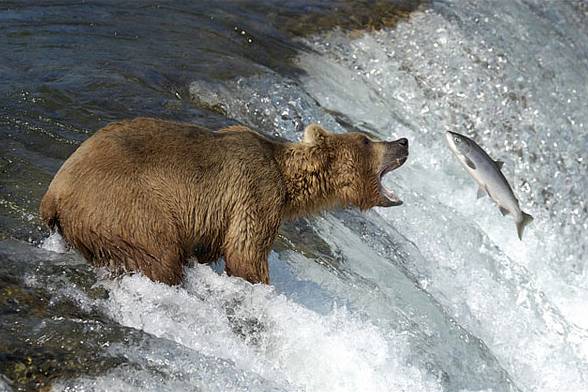
Male grizzlies have large territory, reaching 4 000 square kilometers (1544 mi²), which hinders couple mating due to low population density – finding a female ready for reproduction is a serious problem.
However when the male and female meet, the courting takes place. Male, wanting to win a female, gives out a low roar, gently poking its neck and back with its nose. Pregnancy lasts for 180-250 days, labor takes place in the shelter during winter. Baby bears are born blind, toothless and almost entirely hairless. Baby`s body length is approximately 20 cm and its weight range from 450 to 700 grams (16 – 1lb 9 oz).
Over the first months it stays in the shelter, breast-fed and warmed by mother`s body heat. By the beginning of May babies will have left the shelter, still supervised by their mother. It provides them with food and teaches how to hunt. Be that as it may, babies are often killed by old, solitary females.
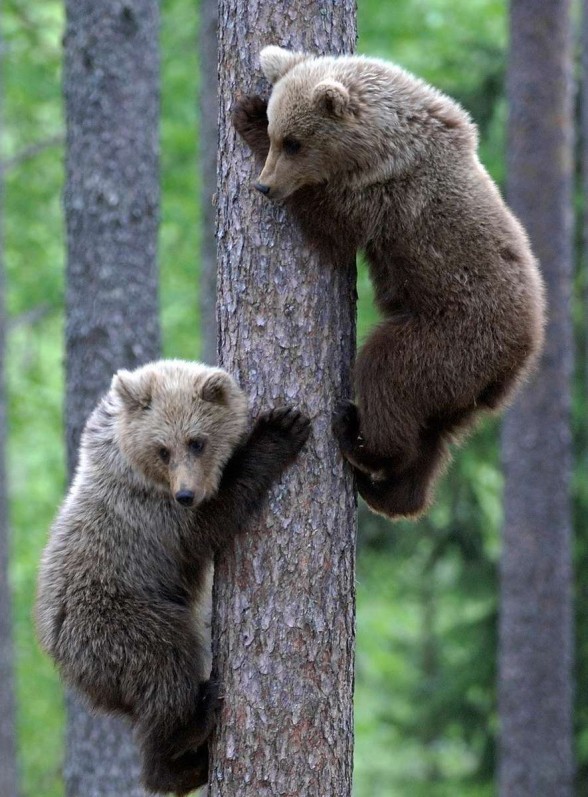
Detailed size characteristic
Grizzly bear (Ursus arctos horriblis)
- Length/Height: up to 2 meters (6ft 7in); longest recorded 3 m (9ft 10in)
- Height at withers: 102 cm (3ft 4.2in); tallest recorded 150 cm (4ft 11in)
- Tarsus length: up to 28 cm (11 in)
- Weight: females: 130 – 200 kg (287 – 441lb); males: 180 – 360 kg (397 – 794lb); heaviest recorded 680 kg (1500 lb)
- Average lifespan: 20-25 years
- Weight at birth: less than 0.5 kg (1 lb)
- Weight gain preparing for winter hibernation : up to 180 kg (397lb)!
There are numerous studies in the field indicating that females from the Yukon river area typically weigh around 100 kg (220lb); continental grizzlies weigh 270 kg (595lb), females 136 kg (300lb); grizzlies in coastal areas – 408 kg (900 lb), females 227 kg (500 lb).
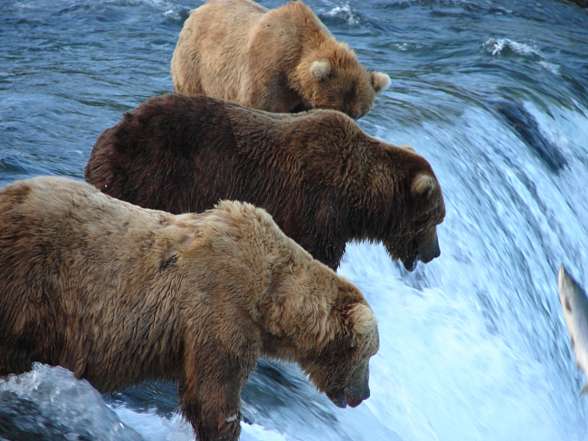
Grizzly bear – interesting facts
- Preparation for the winter hibernation may cause grizzly bears to gain additional 180 kg.
- Before a bear enters its underground shelter it waits for a sizeable snowfall to hide the entrance from other animals.
- Newborn grizzlies are 1/10 the length of their mother.
- Grizzly bear is an endangered species in USA and in some parts of Canada.
- In North America of the early XX century there were about 80 – 100 thousand of these huge animals.
- Historically the grizzly bear was came across in the whole North America, down to Mexico, yet as a result of hunting and devastation of its natural habitat it disappeared from most of the areas.
- Despite its great weight and bulky appearance grizzly can run for 50-100 m as fast a galloping horse.
- Grizzly Bear is also the name of a Brooklyn music band, playing indie rock and folk rock.
- Grizzly bear is a protected species since 1975.
- In 1977-1978 a TV series called ‘The Life and Times of Grizzly Adams’ was aired.
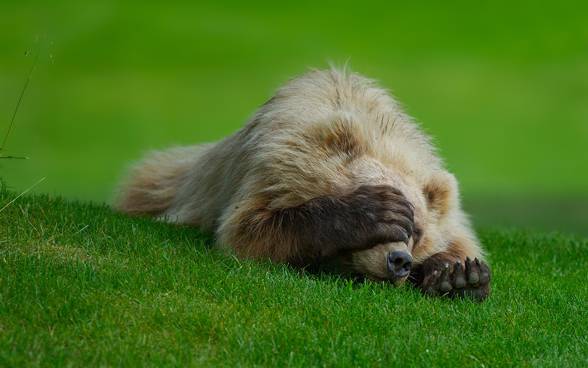
Recommended
- Kodiak bear
- Fastest animals
- Fastest birds
- Lion vs tiger
- Animal fights
- American lion
- European cave lion
- Smilodon – Saber-toothed tiger
- Big cats
- Black panther
- Leopard
- Snow leopard
- Lions
- Tigers
- White lions
- White tigers
- Bengal tiger
- Sumatran tiger
- Liger
- African Lion

